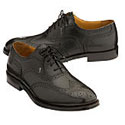|
Vaginal Engineer posted:Change the settings on your G router to assign 192.168.1.2 to the MAC address of your new router. Hopefully that helps out a little. how do I determine the MAC address if it doesn't show up under attached devices? (probably a dumb question)
|
|
|
|

|
| # ? May 4, 2024 15:29 |
|
Ninja Rope posted:But pfsense is software, and the total forwarding rate is going to depend on the hardware running the software? While the network stack of FreeBSD has fine-grained locking for greater concurrency, pf is currently single-threaded (though a multi-threaded implementation is in development) which imposes an upper limit on throughput.
|
|
|
|
MMD3 posted:how do I determine the MAC address if it doesn't show up under attached devices? (probably a dumb question) You have a few different options, but I think your should be able to find it printed somewhere on the router or the box it came in. If this fails, you can unplug it from the other router and then reset it. Then you should be able to connect to it directly (it should either be at 192.168.1.1 or 192.168.1.2). E: Since DHCP is off you may have to set a manual IP address on the connecting device (something like 192.168.1.3 should work)
|
|
|
|
Vaginal Engineer posted:You have a few different options, but I think your should be able to find it printed somewhere on the router or the box it came in. If this fails, you can unplug it from the other router and then reset it. Then you should be able to connect to it directly (it should either be at 192.168.1.1 or 192.168.1.2). Thanks, I'll give this a shot when I get home, hadn't thought about disconnecting it from the DHCP router and resetting it. I have my DHCP router set to hand out addresses from range 192.168.1.3 - ? Is it recommended that you manually assign IP addresses to all of the devices you have connecting to a Wireless router? In my case it'd be like my PC, my iPhone, my iPad... any reason you wouldn't just let it assign them automatically?
|
|
|
|
MMD3 posted:Thanks, I'll give this a shot when I get home, hadn't thought about disconnecting it from the DHCP router and resetting it. Automatic assignment is fine unless you need specific devices on specific addresses for some reason. For example sometimes when file sharing gets messed up you can't connect using a device name, but it works fine using the IP address. This works better if the machine always has the same IP address and you don't need to look it up.
|
|
|
|
Vaginal Engineer posted:Automatic assignment is fine unless you need specific devices on specific addresses for some reason. For example sometimes when file sharing gets messed up you can't connect using a device name, but it works fine using the IP address. This works better if the machine always has the same IP address and you don't need to look it up. gotcha... guess it may make sense to assign my PC's IP address then for the sake of my Boxee Box that's wired to the Wireless G router. I don't fully understand SMB sharing but I believe it looks for my router's IP address and then my PC's name from there to see my PC's shared files, does that sound correct?
|
|
|
|
I have a combo cable modem/router from my ISP that I suspect may be overheating. If I set it up as a bridge and connect a decent router, would that prevent it from heating up, due to the work being offloaded? I'm asking out of curiosity more than anything.
|
|
|
|
TwoKnives posted:I have a combo cable modem/router from my ISP that I suspect may be overheating. If I set it up as a bridge and connect a decent router, would that prevent it from heating up, due to the work being offloaded? I'm asking out of curiosity more than anything. Can't be certain but it would very likely help, yes.
|
|
|
|
I'm wanting to upgrade my wireless to N to get faster speeds, but I have a few legacy devices in my household, so my understanding is that I need to get a simultaneous dual-band router so that the older devices don't force the newer devices to operate at G speeds. Since I require the router to have gigabit ports I was considering the Linksys E3200 mentioned in the OP, but the OP also mentions the E2000 which is about $20 less. Would it be a stupid idea to instead of running a single dual-band router use 2 routers, one for G devices at 2.5Ghz (an older Asus WL-520GC) and then the E2000 running N at 5 Ghz? Related: Is the E3200, which seems to be discontinued but still available, still suggested over the EA2700 or EA3500 (I don't care about USB ports)? fallenturtle fucked around with this message at 20:51 on Jun 27, 2012 |
|
|
|
SamDabbers posted:While the network stack of FreeBSD has fine-grained locking for greater concurrency, pf is currently single-threaded (though a multi-threaded implementation is in development) which imposes an upper limit on throughput. I didn't know that, thanks for sharing. But even single threaded pf will scale with the instructions per second of the CPU, and on a dual-core system there's probably enough else for the second CPU to do (servicing interface interrupts/polling?) to keep it somewhat occupied. Throwing pfsense on an old laptop won't get you 3gbit/second, is all I'm saying.
|
|
|
|
MMD3 posted:gotcha... guess it may make sense to assign my PC's IP address then for the sake of my Boxee Box that's wired to the Wireless G router. You should be just fine with DHCP for client devices. SMB filesharing can work with several name resolution methods. If you've got a fairly modern router handling DHCP and DNS, your PC will send out its hostname with its DHCP request, and the router's DNS server will associate your PC's name with its assigned IP. The actual name resolution is almost always done over DNS, so when your boxee box looks for smb://MMD3-PC/, it resolves the name to an IP just like it would if it were looking for http://www.netflix.com/. fallenturtle posted:I'm wanting to upgrade my wireless to N to get faster speeds, but I have a few legacy devices in my household, so my understanding is that I need to get a simultaneous dual-band router so that the older devices don't force the newer devices to operate at G speeds. Since I require the router to have gigabit ports I was considering the Linksys E3200 mentioned in the OP, but the OP also mentions the E2000 which is about $20 less. Would it be a stupid idea to instead of running a single dual-band router use 2 routers, one for G devices at 2.5Ghz (an older Asus WL-520GC) and then the E2000 running N at 5 Ghz? You don't need dual-band unless you actually want to operate on the 5 GHz band. 802.11n devices can run at their full speed - and get better range - in 2.4, and you won't see much of a speed penalty by mixing in a few legacy 802.11g devices. Moving to 5 GHz is helpful if you live in a high-density area with congestion on the 2.4 GHz band, and it can be useful if you have devices on both ends that support channel bonding and need tons of spectrum for it, but it's not necessary for full speed 802.11n operation.
|
|
|
|
fallenturtle posted:Related: Is the E3200, which seems to be discontinued but still available, still suggested over the EA2700 or EA3500 (I don't care about USB ports)? The E3200 isn't discontinued (from what I know). The EA-series routers are just Cisco's 'App Enabled' models, and those are listed as flagship devices on the Linksys website. Would be bad news if the E3200 really was being replaced, since the EA3500 will never have 3rd party firmware support (Marvell chipset).
|
|
|
|
Space Gopher posted:You don't need dual-band unless you actually want to operate on the 5 GHz band. 802.11n devices can run at their full speed - and get better range - in 2.4, and you won't see much of a speed penalty by mixing in a few legacy 802.11g devices. Moving to 5 GHz is helpful if you live in a high-density area with congestion on the 2.4 GHz band, and it can be useful if you have devices on both ends that support channel bonding and need tons of spectrum for it, but it's not necessary for full speed 802.11n operation. Example: You have three laptops running on N. Your friend comes over with his G only laptop, you let him join the network, bam, all four laptops are running on G. This is wrong. See below. Triikan fucked around with this message at 04:34 on Jul 3, 2012 |
|
|
|
Space Gopher posted:You don't need dual-band unless you actually want to operate on the 5 GHz band. 802.11n devices can run at their full speed - and get better range - in 2.4, and you won't see much of a speed penalty by mixing in a few legacy 802.11g devices. Moving to 5 GHz is helpful if you live in a high-density area with congestion on the 2.4 GHz band, and it can be useful if you have devices on both ends that support channel bonding and need tons of spectrum for it, but it's not necessary for full speed 802.11n operation. Considering I do need the gigabit ethernet ports, I suppose the E2000 is still the best bet for me, yea? How much of a performance hit is there for mixing legacy and N devices. I know one legacy device of mine is an Android phone that uses Wifi and not a dataplan, so its constantly connected to the network.
|
|
|
|
Triikan posted:If you add a single G device to an N network, it makes the entire network run G. If your network does this, there's a configuration issue somewhere. The standard includes provisions for mixed-mode backward compatibility. Try it yourself: Windows reports the current speed in the connection status window. e: fallenturtle posted:Considering I do need the gigabit ethernet ports, I suppose the E2000 is still the best bet for me, yea? What's your goal with the gigabit ports? If you need better than 100 Mbps on the wireless side, keep in mind that there's a gap between theoretical and real-world results, especially with 802.11n. As far as the performance hit is concerned, it can range from "not much" to "quite a bit." In particular, legacy devices do restrict the channel width. In theory, that cuts a big chunk out of your potential speeds; you'll still do better than 802.11g, but you won't hit the speeds listed on the box. In practice, you usually can't do wide channels on 2.4 GHz because it takes a ridiculous amount of spectrum, and range limitations at 5 GHz mean you'll only hit optimal speeds if you set your laptop right next to the router. Space Gopher fucked around with this message at 21:58 on Jun 27, 2012 |
|
|
|
Triikan posted:If you add a single G device to an N network, it makes the entire network run G. I originally thought this as well, but after Space Gopher's comment I did some research and found that the N Standard has 3 modes: HT (or greenfield) which is N only, Non-HT in which all N devices essentially run in G mode, and Mixed-HT, which supports both devices but N devices take a speed hit... but I guess still running faster than G speeds.
|
|
|
|
Space Gopher posted:What's your goal with the gigabit ports? If you need better than 100 Mbps on the wireless side, keep in mind that there's a gap between theoretical and real-world results, especially with 802.11n. Not so much a goal as just the status quo. My current router has gigabit ports and I don't want to downgrade my wired network. After initially getting excited about N speeds, I realized that the actual speeds will be much slower. My current router, I think, is dying. It has a firmware that was replaced with a newer firmware for addressing some security issues, yet it won't let me upgrade the firmware and I believe its dropping more packets than a blind barista... so I figured I might as well upgrade since my collection of N devices has been growing. Edit: So if I do want to take advantage of the 5Ghz frequency, is there any advantage disadvantage of going simul-dualband vs two separate access points? fallenturtle fucked around with this message at 22:42 on Jun 27, 2012 |
|
|
|
fallenturtle posted:I originally thought this as well, but after Space Gopher's comment I did some research and found that the N Standard has 3 modes: HT (or greenfield) which is N only, Non-HT in which all N devices essentially run in G mode, and Mixed-HT, which supports both devices but N devices take a speed hit... but I guess still running faster than G speeds. I always have mixed-HT running. A wireless network that can't run all of my devices at the best speed possible at the time doesn't do me much good. fallenturtle posted:Edit: So if I do want to take advantage of the 5Ghz frequency, is there any advantage disadvantage of going simul-dualband vs two separate access points? I always have dual band running. The advantage to me is that my 5GHz devices can operate without worrying about interference from other networks slowing performance. Also when I'm streaming from a 2.4 GHz device to the apple tv at 5GHz I know I'm getting full speed on both wireless networks without slowing anything else on my network. The only benefit I can see with two separate access points is that you could place them in different locations, subject to whatever wiring issues. Devian666 fucked around with this message at 23:51 on Jun 27, 2012 |
|
|
|
Devian666 posted:I always have mixed-HT running. A wireless network that can't run all of my devices at the best speed possible at the time doesn't do me much good. is mixed-HT enabled by default on most routers?
|
|
|
|
I run mixed-HT on my WNDR3700's 2.4ghz band. The only 2.4ghz N device (my housemate's PC) is limited to ~150mbit, so the occasional speed drop from the -G phones doesn't really affect anything for the most part. The 5ghz network runs mixed by default, but the 5ghz N devices all run at 300mbit so the speeds never drop down on that band. I use 5ghz with the PCI-E card on my desktop as it gets better speeds and pings even with the reduced signal strength vs. G-mode (probably due to all the 2.4ghz interference in my apartment complex).fallenturtle posted:Edit: So if I do want to take advantage of the 5Ghz frequency, is there any advantage disadvantage of going simul-dualband vs two separate access points?
|
|
|
|
Devian666 posted:I always have mixed-HT running. A wireless network that can't run all of my devices at the best speed possible at the time doesn't do me much good. But hypothetically if you added a dedicated 5Ghz N access point and segregated your N devices to it, they would run faster... right?
|
|
|
|
MMD3 posted:is mixed-HT enabled by default on most routers? I can't remember. I always pick through every setting when I have a new router to make sure it's configured the way I want.
|
|
|
|
fallenturtle posted:But hypothetically if you added a dedicated 5Ghz N access point and segregated your N devices to it, they would run faster... right? That's correct. Especially given that most slow devices only support 2.4 GHz.
|
|
|
|
grumperfish posted:You'd have to pay more for 2 APs/routers, although the added cost of a dualband router might offset that, so maybe not. It's possible that 2 routers running 1 radio each may last longer, but with the quality of most commodity routers that's a shot in the dark at best. I already have an older G router that I guess I would just run in AP mode.
|
|
|
|
For some reason a storm we had here killed both my modem and router (E1000) so I ended up buying the Linksys EA3500 at work, but I am wondering if my decision was a bad one (I am thinking it was) because my previous one ran great (after I put custom firmware on it, of course). As a matter of fact I may buy the E2500 because they have it at work and it's dd-wrt compatible. Feeling like I answered my own question here.
|
|
|
|
Vaginal Engineer posted:You have a few different options, but I think your should be able to find it printed somewhere on the router or the box it came in. If this fails, you can unplug it from the other router and then reset it. Then you should be able to connect to it directly (it should either be at 192.168.1.1 or 192.168.1.2). So I still can't figure this out  I pulled the mac address off of the box and manually set the IP for the router's mac address to 192.168.1.3, but I still can't connect to the router by going to 192.168.1.3  am I missing something? Why can't I connect to the Wireless N router?
|
|
|
|
MMD3 posted:So I still can't figure this out Is the N-router's IP still set to 192.168.1.2, like in the previous screenshot? If so, pretty sure you'll need to change that to 192.168.1.3, now that the G-router has that address reserved for it. You should be able to do that by connecting your computer directly to just the N-router, give the computer a static IP in the same range, like 192.168.1.100, and then you should be able to reach the N-router config page at it's address (192.168.1.2, if that's what it's still set at). At that point, it all looks like it should be set up correctly... But, you know, black magic and all, like the thread title says.
|
|
|
|
MMD3 posted:So I still can't figure this out A few things:
I'd recommend you to go through every devices and set them up one by one. DaNzA fucked around with this message at 10:17 on Jun 28, 2012 |
|
|
|
AustinJ posted:Is the N-router's IP still set to 192.168.1.2, like in the previous screenshot? If so, pretty sure you'll need to change that to 192.168.1.3, now that the G-router has that address reserved for it. You should be able to do that by connecting your computer directly to just the N-router, give the computer a static IP in the same range, like 192.168.1.100, and then you should be able to reach the N-router config page at it's address (192.168.1.2, if that's what it's still set at). I was never able to actually set the N Router to 192.168.1.2 because of that error message, when I finally unplugged it from the WAN port and plugged it into the LAN port DaNzA posted:A few things: hmmm, I'll try changing the G router to 192.168.1.2, that would just be the address at the top of that screenshot under LAN IP setup right? The reason I set the N router at .1.3 was because it said it had to fall within the IP range, I'm pretty sure with my old router the reason I started the range at .1.3 was so I could assign .1.2 to my old N router and it would be outside of the assigned range to avoid conflicts. Is there some reason that it wouldn't allow me to manually assign an IP address outside of the DHCP server range? I'd love to configure every device at this point but I still can't figure out how to connect to my N router again, once I get to that point hopefully I'll be good to go. :/
|
|
|
|
Is this a good deal? http://ncix.com/products/index.php?sku=61375&vpn=E3200-CA&manufacture=Linksys&promoid=1223 edit: as in, would I be smart in picking it up? I need a wireless N solution for home and would like it for Tomato.
|
|
|
|
TomatoUSB doesn't have support for the 5GHz band with the E3200.
|
|
|
|
Oh drat. I'm in an apartment complex and 2.4 is full. Guess that's a deal breaker. edit: DD-WRT shows support, does it have 5ghz support? edit2: found this thread: http://www.dd-wrt.com/phpBB2/viewtopic.php?t=138558&postdays=0&postorder=asc&highlight=e3200&start=0 It appears 5ghz is being worked on but not officially supported. gently caress it, it was cheap, I purchased anyway. I'm just going to use the stock firmware and use it as an AP for now. IT Guy fucked around with this message at 17:54 on Jun 29, 2012 |
|
|
|
The stock firmware on that router is better then most alternatives, imho. Just update it to the latest version from the Linksys site.
|
|
|
|
NOTinuyasha posted:The stock firmware on that router is better then most alternatives, imho. Just update it to the latest version from the Linksys site. Speaking of upgrading firmwares in Linksys/Cisco-router, has anyone seen This yet? Basically Cisco is pushing a non-optional firmware update to a bunch of their high-end home routers. The new firmware prevents you from logging directly into the router, you have to control everything via a webpage at Cisco. Also, they grant themselves the right to log all your web-traffic "and other related information".
|
|
|
|
I'm actually running DD-WRT in a work environment but this definitely looks like the place to ask. I need to get routers that I can flash to DD-WRT and configure as access points. All I need them to do is work with WPA and run on Power Over Ethernet. Could anyone recommend something cost effective and reliable? I'm going to configure scheduled soft reboots so they can run for years at a time. The Cisco brand stuff I have right now we paid like $300 each for and I still have to power-cycle them weekly.
|
|
|
|
I am at my folks house and they're paying a monthly rental to Comcast for a modem. I bought them the latest Motorola -- but then i realized they also need a modem that supports voice internet. There doesn't seem to be any quality DOCIS 3.0 modem that has this feature...can someone point me in the right direction?
|
|
|
|
Kalix posted:I am at my folks house and they're paying a monthly rental to Comcast for a modem. In some places you can buy an Arris modem, but not everywhere that Comcast provides service: http://www.arrisi.com/consumer/
|
|
|
|
How can I find a router that does 2.4hgz N? It seems every router now does mix-mode, but that usually means G in 2.4 and N in 5. I'm trying to get higher speed through a concrete rebar wall.
|
|
|
|
Italy's Chicken posted:How can I find a router that does 2.4hgz N? It seems every router now does mix-mode, but that usually means G in 2.4 and N in 5. I'm trying to get higher speed through a concrete rebar wall. The Asus RT-N16 does 2.4 Ghz N and it's not dual band (so no 5 Ghz). I highly recommend it as do many other goons.
|
|
|
|

|
| # ? May 4, 2024 15:29 |
|
Italy's Chicken posted:How can I find a router that does 2.4hgz N? It seems every router now does mix-mode, but that usually means G in 2.4 and N in 5. I'm trying to get higher speed through a concrete rebar wall. All of the dual-band routers, unless I'm mistaken, do N on 2.4 GHz. Which is to say you can set them to N-only, although their default is a mixed-mode which includes G and N (where N devices suffer some performance impact).
|
|
|


























